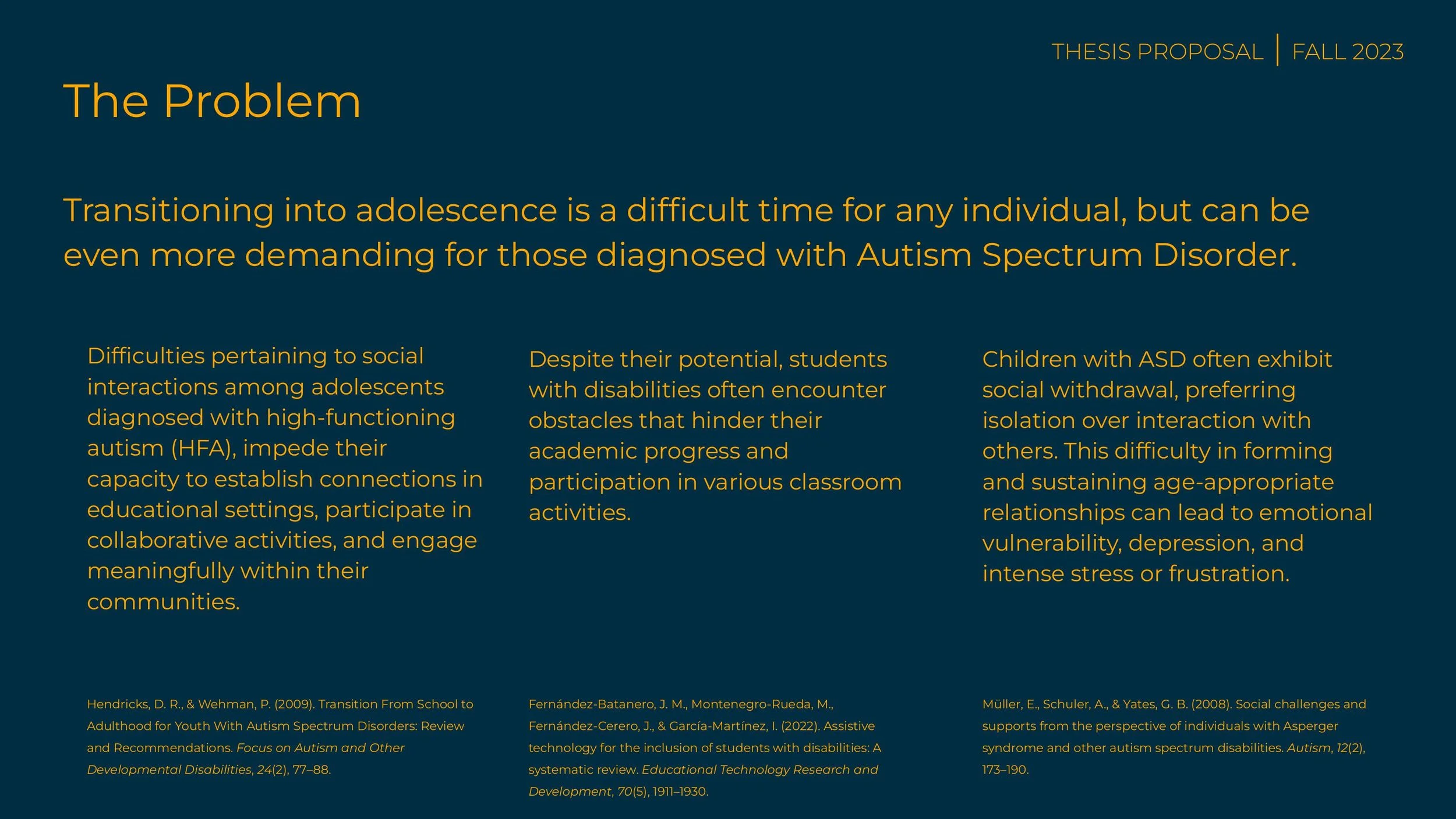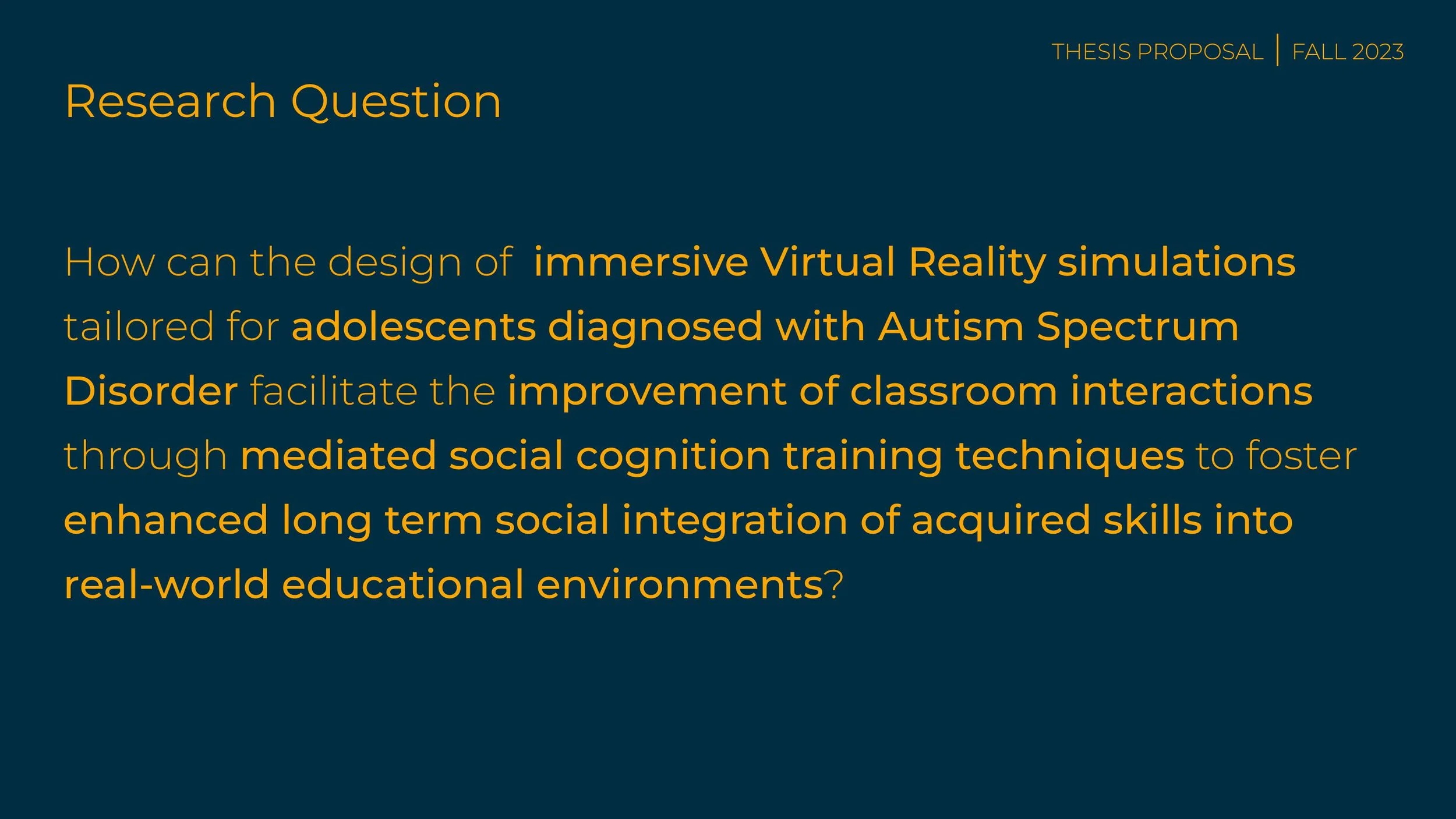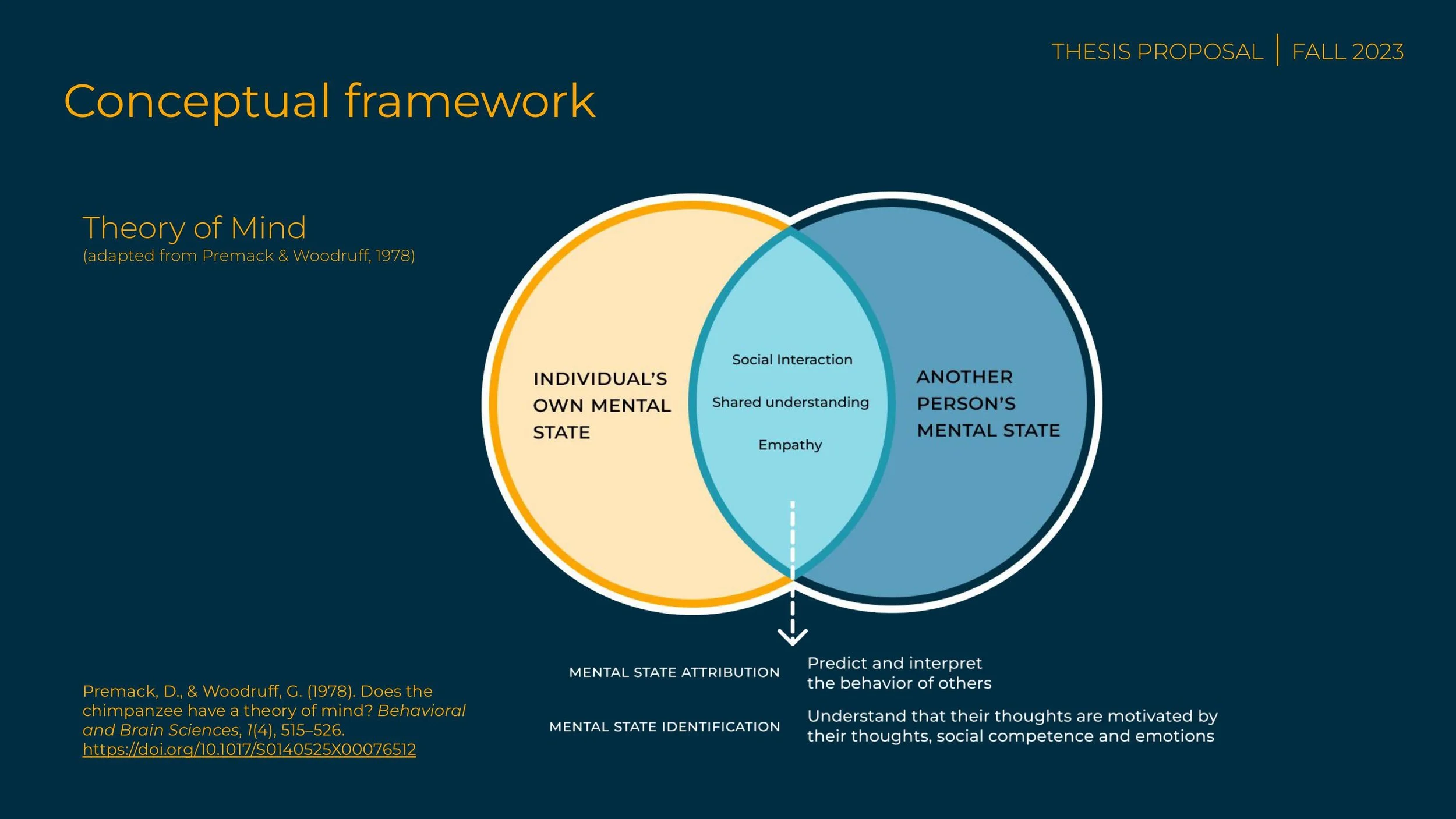VR for Autism
Thesis Project ( Ongoing )
Exploring Immersive VR Simulations for Enhancing Social Interaction in Individuals with Autism
BACKGROUND
After an enriching summer at the design camp in 2023, I crossed paths with a truly remarkable individual. She possessed an exceptional talent for design and an infectious passion for creating with purpose. As her counselor, I had the privilege of guiding her through the diverse range of design courses available, witnessing her immense potential in the field. Yet, there was a hurdle she grappled with - her struggle to forge meaningful connections with her peers due to difficulties in understanding social cues and behaviors. This often left her feeling overwhelmed, leading to occasional outbursts or seclusion.
I learnt from her parents that she had been grappling with this challenge since her diagnosis with Autism Spectrum Disorder. It pained me to witness such an extraordinary talent being stifled by a lack of understanding and support from those around her. This realization left me pondering - how could design be leveraged to aid her? Thus, I embarked on a deeply meaningful journey to develop a virtual reality system tailored to assist individuals with autism in honing their social interaction skills.
DISCLAIMER
This is an ongoing thesis project. I will be updating it as I keep making progress in my findings. For now I have attached my slide deck made from my research so far and current direction in this project.
SLIDE DECK
With the boom of Autism Spectrum Disorder in 1990’s, today 1 in every 13 individual is diagnosed with ASD. By 2020, most of these individuals struggled transitioning into adulthood which gained a lot of attention from researchers all over the world. The outcome of this research understood that teenagers with HFA face difficulty in forming relationships in educational settings which hinder their professional progress leading to depression, intense stress and frustration.
Among these precedents that I was researching for my project, only Floreo was built for individuals with autism from scratch. Second life and other role playing VR games were initially just games with good concepts of relationship building, for reasons which it was also applied for Autism. VR exposure therapy was to ease fears and anxiety in VR simulations.
People: Autistic adolescents
Media: Immersive VR simulations
Setting: Simulations of classroom interactions
Outcome: long term integration of social skills in real world educational environments
Means: Social cognition training techniques.
First framework used in this project, Theory of mind is a complex cognitive ability that is essential for successful social interaction. The framework explains how Theory of Mind allows us to understand that others have their own thoughts, beliefs, desires, and intentions, which may be different from our own. Autism can also be defined as impairment of Theory of Mind.
The second framework that is essential to this project is the Immersive Learning Experiences PRAS model, which includes four key components from both the learner and learning environment’s perspective. These components together set up a framework of concepts that sum up components in an immersive learning environment.
My conceptual framework illustrates the connection between a user and the external world using concentric circles representing the layers involved in this interaction. For individuals with ASD, the distance between the user and the world significantly widens. Additionally, this framework also visualizes the role and importance of VR in narrowing this gap.










